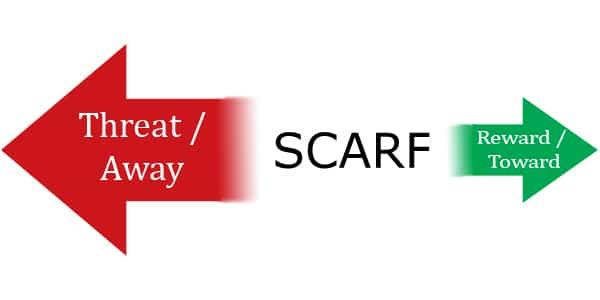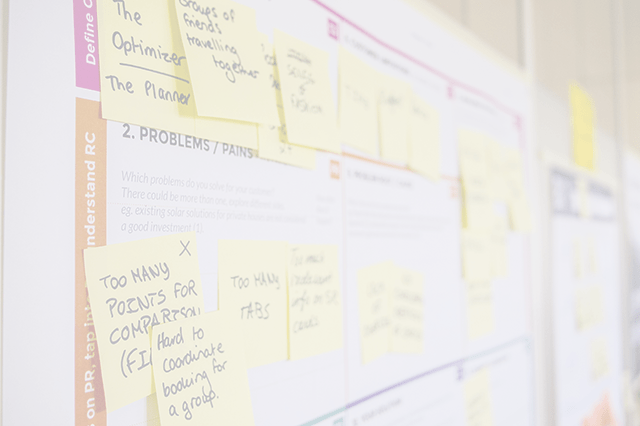SCARF Model
The SCARF Model of human behaviour is useful to understand how people respond to the world through the lenses of Status, Certainty, Autonomy, Relatedness, and Fairness. In our case, we focus on how the model explains behaviour of people in the world of Agile work.
The model is based on three major findings:
- Social threats and rewards are treated with the same intensity as physical threats and rewards. - Eisenberger, N. and Lieberman, M. (2009)
- Our ability to solve problems and make decisions is diminished when we’re in a threat state, and increases when in a reward state. - Fredrickson, B. (2001).
- People are more easily placed into Threat than Reward, so in our work we need to minimize the things that create Threat. - Baumeister, R., Bratslavsky, e., & Vohs, K. (2001)

SCARF Model
| Attribute | Definition | Example Threat | Example Reward |
|---|---|---|---|
| Status | How you see yourself and how others see you. | Traditional performance review. Being mentioned in the context of a problem. | Thanking someone or acknowledging their work. Any form of recognition. |
| Certainty | How confident you can be of the future. | Change – Agile or otherwise – takes away the certainty of the people involved. | Transparency of information around the change process. Help clarify goals. |
| Autonomy | How much control you have over your situation. | Micromanaged people. | Involved team members – not only in assigning work, but also designing their mission or vision. |
| Relatedness | How connected/safe you feel with others. | New team member, especially in remote work environment. Explains why strangers are seen as a threat. | Without enforcing socialization, give team members time and opportunity to socialize. Consider building in opportunities to exchange information about who they are. |
| Fairness | How reasonable you feel that decisions involving you have been. | Unclear rules around how salary, bonuses, disputes or anything else is treated. | Working Agreements that cover team decision making protocols, etc. Training/education on the importance of diversity and how it works. Making salary and bonus tables public. |
Related Books
- Your Brain at Work
- David Rock
